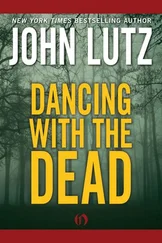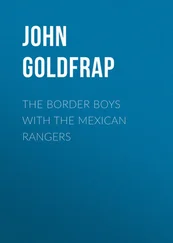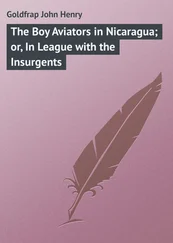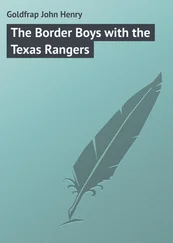John Wohlstetter - Sleepwalking with the Bomb
Здесь есть возможность читать онлайн «John Wohlstetter - Sleepwalking with the Bomb» весь текст электронной книги совершенно бесплатно (целиком полную версию без сокращений). В некоторых случаях можно слушать аудио, скачать через торрент в формате fb2 и присутствует краткое содержание. Город: Seattle, Год выпуска: 2012, ISBN: 2012, Издательство: Discovery Institute Press, Жанр: История, military, Политика, Публицистика, на английском языке. Описание произведения, (предисловие) а так же отзывы посетителей доступны на портале библиотеки ЛибКат.
- Название:Sleepwalking with the Bomb
- Автор:
- Издательство:Discovery Institute Press
- Жанр:
- Год:2012
- Город:Seattle
- ISBN:978-1-93659-906-6
- Рейтинг книги:3 / 5. Голосов: 1
-
Избранное:Добавить в избранное
- Отзывы:
-
Ваша оценка:
- 60
- 1
- 2
- 3
- 4
- 5
Sleepwalking with the Bomb: краткое содержание, описание и аннотация
Предлагаем к чтению аннотацию, описание, краткое содержание или предисловие (зависит от того, что написал сам автор книги «Sleepwalking with the Bomb»). Если вы не нашли необходимую информацию о книге — напишите в комментариях, мы постараемся отыскать её.
RICHARD PERLE, Resident Fellow, American Enterprise Institute and Assistant Secretary of Defense, 1981–1987 Sleepwalking with the Bomb
Sleepwalking with the Bomb — читать онлайн бесплатно полную книгу (весь текст) целиком
Ниже представлен текст книги, разбитый по страницам. Система сохранения места последней прочитанной страницы, позволяет с удобством читать онлайн бесплатно книгу «Sleepwalking with the Bomb», без необходимости каждый раз заново искать на чём Вы остановились. Поставьте закладку, и сможете в любой момент перейти на страницу, на которой закончили чтение.
Интервал:
Закладка:
On June 26, 1954, Churchill told President Eisenhower about the British H-bomb program. Just weeks earlier, on June 1, the Chiefs of Staff advised the prime minister that in event of war, 10 H-bombs of 2 to 20 megaton yield would kill 5 to 12 million people—this in a country whose 1954 population was some 52 million. While the two discussed a nuclear-armed Russia at a White House luncheon, Churchill quipped: “Meeting jaw to jaw is better than war.” (The quote is frequently presented as “jaw-jaw beats war-war.”) It should be noted that Churchill felt very differently in the middle and late 1930s, repeatedly calling for Allied military action against Hitler’s legions before they gained greater strength than Allied units. The hydrogen changed his assessment.
Prime Minister Harold Macmillan made restoration of Anglo-American nuclear cooperation a top priority. When in 1962 the Kennedy administration peremptorily cancelled the joint U.S.-UK Skybolt air-to-ground nuclear missile project, Macmillan met with Kennedy at the hastily convened Nassau Summit to discuss a replacement. The result was that Britain got American Polaris undersea-launched ballistic missiles for its own ballistic missile submarines. As of 2010, the British had deployed some 160 to 200 nuclear warheads, all carried on nuclear subs.
France
WITH ITS three Nobel Prize winners of 1903—Henri Becquerel and the Curies, Marie and Pierre—France, like Britain, was a pioneer in nuclear research. Under Frederic Joliot-Curie, its nuclear program started almost immediately after the Battle of Normandy and the Allies’ August 1944 liberation of Paris from the Nazis. General Charles de Gaulle (still exiled in England) ordered French scientists working in the U.S. nuclear program to return to France even before the Germans surrendered. In his memoir, Manhattan Project chief General Leslie Groves recounts how Joliot-Curie, an ardent Communist, refused to help the Americans, and also helped France obtain access to American nuclear know-how by blackmail. Unless the U.S. helped France, Joliot-Curie would get France to turn to the Russians. The October 1945 elections brought in a government that abandoned the project, but it resumed in 1952, with a nuclear reactor program.
Then, in 1954, the Vietminh Communists defeated the French at Dien Bien Phu. The French had asked President Eisenhower to drop atomic bombs on the insurgents. His refusal made a French weapon inevitable. [38] However, it is far from clear that nuclear bombs would have been effective against widely dispersed forces. Like Afghanistan today, Vietnam simply did not have the kind of concentrated targets that make nuclear weapons effective.
A month and a half after the defeat at Dien Bien Phu, anti-colonialist Pierre Mendes-France came to power. His government would not last a year, but while in office, he took the decision to build an independent nuclear weapon. Back under the leadership of de Gaulle, France tested its first A-bomb on February 13, 1960, in the Algerian desert (U.S. code-name BB-1, the BB for French sex siren Brigitte Bardot). [39] France tested its last weapon in 1996 in the final series by a Western country.
Shortly after the test de Gaulle exclaimed: “If France must have allies, she has no need of a protector!” Ironically, none other than A-bomb father J. Robert Oppenheimer had told French nuclear scientist Francis Perrin that France should make an atom bomb: “It would be good for France. And it isn’t very difficult. All you need is a metallurgist endowed with a little imagination.”
De Gaulle was the prime guiding spirit of France’s bomb program. De Gaulle believed that a nuclear program conferred technology leadership valuable in world markets. He also believed a third world war to be imminent—and he was reluctant to rely on the American nuclear umbrella to deter Soviet aggression. As he explained to Eisenhower in a summit meeting in 1959:
You, Eisenhower, would wage nuclear war for Europe, because you know the interests that are at stake. But as the Soviet Union develops its capacity to strike the cities of North America, one of your successors will agree to wage nuclear war only [in Europe]. When that time comes, I or my successor will have to possess the necessary means to change into nuclear war what the Soviets would have liked to have remained a classic war.
De Gaulle’s quest for nuclear independence reflected his World War II experience: British troops leaving European soil at Dunkirk in June 1940, American officials hesitating to send troops into combat in Europe until Hitler declared war on America, America’s delaying the Normandy landing until 1944, and de Gaulle’s exclusion from major Allied strategic decisions, despite his being commander (in exile) of the Free French Forces. De Gaulle also made the point that no one could foresee how the world would look in 20 years. (In that he was guilty of gross understatement.)
Even before his meeting with Eisenhower and France’s 1960 atomic bomb test, de Gaulle had decided to push research on a hydrogen bomb. De Gaulle considered full nuclear-club membership to require development and deployment of thermonuclear bombs and believed that only with such an arsenal could a nation truly be fully independent in the nuclear age. France exploded its first two thermonuclear devices in August 1968.
De Gaulle was taken aback when the Kennedy administration changed American deterrence policy from “massive retaliation” to “flexible response” without consulting Europe, and when Kennedy used the adjective “unfriendly” to describe the French nuclear program. Guided by his imperial, intensely patriotic vision of France standing alone, de Gaulle withdrew France from the NATO defense command structure in 1966, because NATO weapons require American approval as part of their release. (France rejoined that structure only in 1996, well after the Cold War had ended.) De Gaulle’s concerns about American willingness to use nuclear weapons to defend France were not unjustified. When Secretary of State Dean Rusk was told by a French officer that France would use nuclear weapons to force America to “go to extremes” in the event of a Soviet invasion, Rusk answered that in such event America would tell the Soviets that America had nothing to do with France’s nuclear decision.
By 2010, France had an estimated arsenal of 300 nuclear weapons, based on bombers, land, and sea, but equally fateful was France’s decision to help Israel build a nuclear bomb.
Britain, France, and Israel in Suez
PRESIDENT TRUMAN recognized Israel upon its May 14, 1948, founding. But when Egypt, Syria, Lebanon, and Iraq invaded the next day (joining Palestinian guerillas, who had attacked Israel the day after the UN passed its November 29, 1947, resolution partitioning Palestine), Israel’s main help came from private sources. The U.S. government subsequently remained neutral, and British sentiment tilted towards the Arabs. The USSR, though not allied with Israel, allowed Czech arms dealers to sell their wares to the Israelis.
After Israel won its initial war of survival in 1949, Israel’s first prime minister, David Ben-Gurion, began thinking about developing nuclear weapons. Before he left office, a tectonic political event occurred to make the question of nuclear weapons more urgent: the 1952 Free Officers coup in Egypt, which brought the charismatic pan-Arabist, pro-Soviet Gamal Abdel Nasser to power.
After a botched covert operation discredited the Israeli government (the affair, which partly aimed at getting rid of Nasser, involved Israeli agents clandestinely bombing two U.S. buildings in Cairo ), the 69-year-old Ben-Gurion took up office again in late 1955. He entered into the Atoms for Peace commercial nuclear program, but also began a clandestine effort to develop a weapon.
Читать дальшеИнтервал:
Закладка:
Похожие книги на «Sleepwalking with the Bomb»
Представляем Вашему вниманию похожие книги на «Sleepwalking with the Bomb» списком для выбора. Мы отобрали схожую по названию и смыслу литературу в надежде предоставить читателям больше вариантов отыскать новые, интересные, ещё непрочитанные произведения.
Обсуждение, отзывы о книге «Sleepwalking with the Bomb» и просто собственные мнения читателей. Оставьте ваши комментарии, напишите, что Вы думаете о произведении, его смысле или главных героях. Укажите что конкретно понравилось, а что нет, и почему Вы так считаете.












